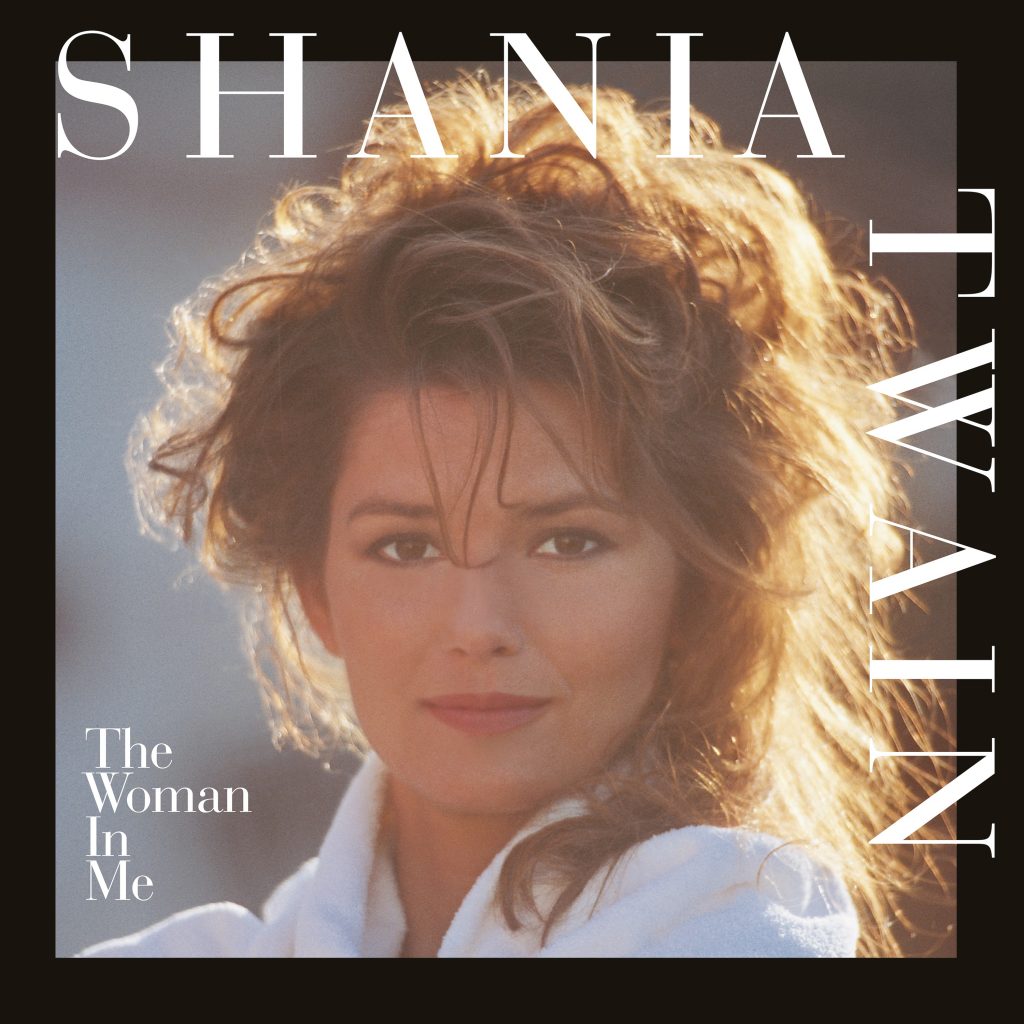25 Years Later: Shania Twain’s ‘The Woman In Me’
Her milestone album is the seventh all-time best-seller in country.

Before the pivotal year of 1995, Shania Twain was best known as one-third of a record label marketing scheme. Mercury Records had devised a campaign in 1993 where it essentially introduced three new artists simultaneously, under the banner of the Triple Play. The three artists carrying the lumber, keeping the baseball analogy intact, were Twain and a couple of male singer/songwriters: Toby Keith and John Brannen. They released a joint promotional CD, with each artist appropriately showcasing three songs, titled Mercury’s Triple Play Sampler. The three were also sent out on a Triple Play Tour. Incidentally, copies of the sampler CD have been floating around on various online auction sites, and snapping one up would prove a real “find” for the serious collector or nostalgia dabbler.
The campaign produced marginal results. Keith hit a home run straight from the gate with his 1993 debut single, “Should’ve Been a Cowboy,” which shot straight to No. 1. His second single that year, “He Ain’t Worth Missing,” landed at the No. 5 spot, still quite impressive for a newcomer. Brannen, sporting a blue collar rootsy sound that drew the inevitable Springsteen and Mellencamp comparisons, was considered by many as the most talented of the threesome, but never enjoyed a mainstream country career. The third member of the parlay, Twain, released a pair of singles in 1993, “What Made You Say That” and “Dance With the One That Brought You.” Both peaked at No. 55 on the Billboard country singles chart, chalking one up for consistency, at least. Certainly, Keith was the front-runner. But the Canadian-born Twain would not be outdone.

Twain also released a self-titled debut album in 1993, which had respectable chart numbers while still falling into the “mostly forgettable” category. But her follow-up, The Woman in Me, proved, well, unforgettable. Released February 7, 1995, the record rocketed the Canadian songbird to global superstardom, spawning an incredible eight singles, with four of them reaching No. 1, and selling four million copies by the end of the year. It’s considered a landmark country album in terms of production, songwriting and its impact on the genre. We take a look back at The Woman in Me as it celebrates its 25th year.
THE PERFECT PARTNERSHIP
Sometimes, as a number of songwriters will attest, you just need to find the right collaborator to make your music shine. Twain uncovered hers in rock producer Robert John “Mutt” Lange. She caught the attention, and we have to think visually as well as sonically, of Lange, who noticed some potential in her debut album. Lange was the driving force behind ear-busting bands like Def Leppard and AC/DC, so it seemed a curious notion on his part. But actually, Lange, who grew up in South Africa, was raised on country music and wanted to tackle writing country songs. Lange and Twain began conversing by long distance telephone (the computer age was still in its infancy), exchanging musical ideas and song structures. Business led to romance and the two were married in December of 1993 (they later divorced in 2010).
By the time Twain was slated to record her second album, she and Lange had already written several songs together. The tunes strayed a little far from country and were closer in composition style to pop. The label heads at Mercury, however, decided to keep the songs and gave the green light for Lange to forge ahead and produce the album. A wise choice on many levels.
As a songwriter tandem, Lange and Twain made a versatile combo, as their songs covered plenty of thematic territory. “Any Man of Mine” served up a feisty feminist-inspired statement, while “The Woman in Me (Needs the Man in You)” dealt with longing in an achingly beautiful way. “You Win My Love” and “Whose Bed Have Your Boots Been Under?” – the latter easily the most country-flavored tune on the record – reveled in up-tempo fun. The lilting “No One Needs to Know” had an Everly Brothers feel to it, and you could almost imagine the Kentucky siblings singing backup.
The songs were unbelievably catchy, easily identifiable from the first notes. Twain sold them in a clear contralto voice that reminded fans of Karen Carpenter, a vocalist Twain admired. When all the elements were shaken together, you had a fairly unbeatable formula. What was not to like?
THE SINGLES TALLY
The Woman in Me spawned eight singles during 1995 and 1996, a hefty number for most albums that came out of Nashville. Half of those hit No. 1: “Any Man of Mine,” “(If You’re Not in It for Love) I’m Outta Here,” “You Win My Love” and “No One Needs to Know,” which was also featured in the box-office smash movie Twister.
View this post on Instagram25 years ago I released the album that really started it all off for me… The Woman In Me 💎
A post shared by Shania Twain (@shaniatwain) on
THE CURIOUS CASE OF THE AWARDS
Every year when the CMA award nominees are announced, fans and industry members alike invariably point to the ones who got shunned and left out. But at the 1995 revealing, one particular omission proved a head-scratcher to some, and downright sacrilege to others. The Woman in Me was completely overlooked in the Album of the Year category.
Various theories abounded. The album wasn’t country, at least by industry standards, perhaps. Maybe Twain was not established enough. Still, one could not ignore the numbers. The Woman in Me hit No. 1 on the albums chart in July and did not give up the spot until October, when Tim McGraw’s All I Want reached the top. It had already sold in the millions by the time CMA members were given their voting ballots.
“Any Man of Mine” did score a CMA award nomination for Single off the Year in 1995, though the trophy went to Alison Krauss & Union Station for “When You Say Nothing at All.” The following year, “Any Man of Mine” was nominated for Song of the Year (without going into undue intricacies, the award had different criteria at the time), but was bested by “Go Rest High on That Mountain,” certainly a deserving winner. Twain herself picked up a nomination for the Horizon Award (now called New Artist of the Year).
Twain eventually earned some righteous recognition for the album. In 1996, The Woman in Me took home the Grammy for Best Country Album and won the Academy of Country Music award for Album of the Year.
THE LEGACY
For sheer impact, The Woman in Me boosted Twain from relative newcomer to pop/country superstar. The album reached four million sales by the end of 1995 and spent a total of 29 weeks at No. 1, more than double the number of runner-up John Michael Montgomery’s self-titled album that year. Perhaps most important, the album’s sales success veritably thumbed its nose at the tired axiom that country females couldn’t move product. To date, The Woman in Me has sold more than 12 million copies, placing it seventh on the list of all-time best-selling country albums.


